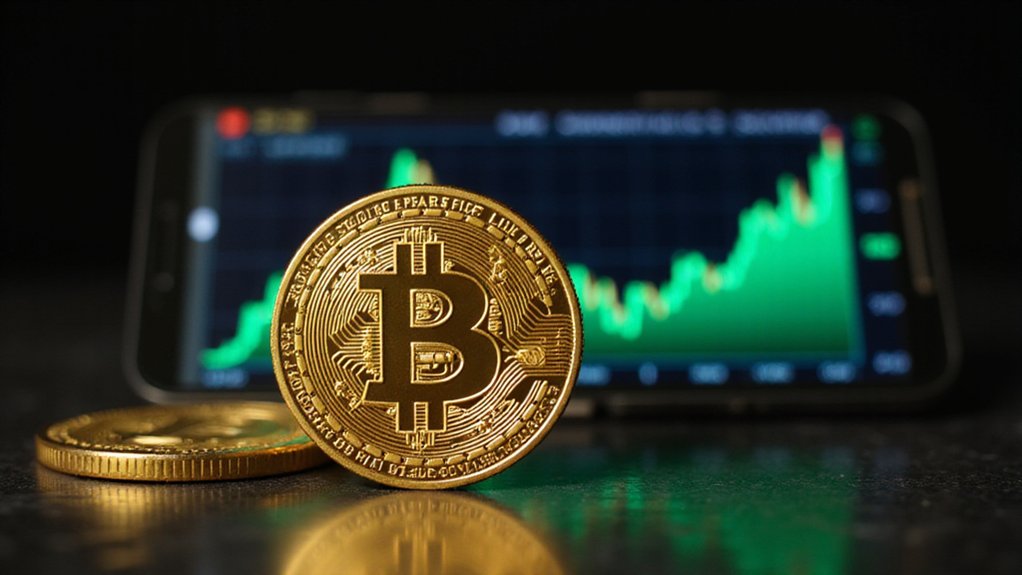Amazon’s tokenized stock has been trading at price differentials of up to 300% compared to its actual shares on traditional exchanges—a phenomenon that transforms what should be a straightforward equity investment into something resembling a particularly volatile cryptocurrency speculation.
These dramatic price gaps expose fundamental inefficiencies in the emerging tokenized stock market, where regulatory barriers and liquidity fragmentation create opportunities for spectacular gains alongside equally spectacular losses.
Tokenized equity markets showcase how regulatory friction and scattered liquidity can transform traditional investments into high-stakes speculation.
Recent trading data reveals the extent of these discrepancies: on July 3, 2025, Amazon tokens on Huobi commanded $4,500 while actual shares traded at $1,800—a staggering 150% premium driven by speculative demand.
Two days later, Binance displayed an even more pronounced 200% gap, with tokens reaching $5,700 against the stock’s $1,900 price. Conversely, Kraken’s Amazon tokens traded at a 33% discount to the underlying equity, demonstrating how liquidity constraints can swing prices in either direction with alarming volatility.
The root causes of these price dislocations stem from structural market inefficiencies that would make traditional arbitrageurs weep.
Regulatory barriers prevent the free transfer of tokenized stocks between markets, effectively eliminating the corrective mechanism that typically keeps prices aligned across venues.
Transaction fees and time delays on crypto platforms further impede the price equalization process, while fragmented liquidity across hundreds of exchanges creates persistent slippage and inconsistent buy/sell offers.
Perhaps most concerning is how crypto market sentiment can completely decouple token prices from actual stock value, leading to speculative surges or crashes that bear no relationship to Amazon’s underlying business performance. The synthetic derivatives and fractionalized shares available on crypto platforms may appear to increase accessibility for retail investors, but they add additional layers of complexity to price discovery mechanisms.
The nascent and largely unregulated nature of tokenized stock markets amplifies these speculative behaviors, creating an environment where smart order routing technologies struggle to maintain market depth.
For investors considering tokenized stock trading, these price discrepancies represent both opportunity and significant risk. Unlike traditional DeFi lending and borrowing platforms that offer transparent transactions on blockchain networks, tokenized stock markets operate with opacity that obscures true price discovery mechanisms.
The inability to efficiently arbitrage between crypto and traditional markets means price gaps can persist indefinitely, turning what appears to be a familiar equity investment into an unpredictable speculative instrument that may have little correlation with the company’s actual financial performance.








